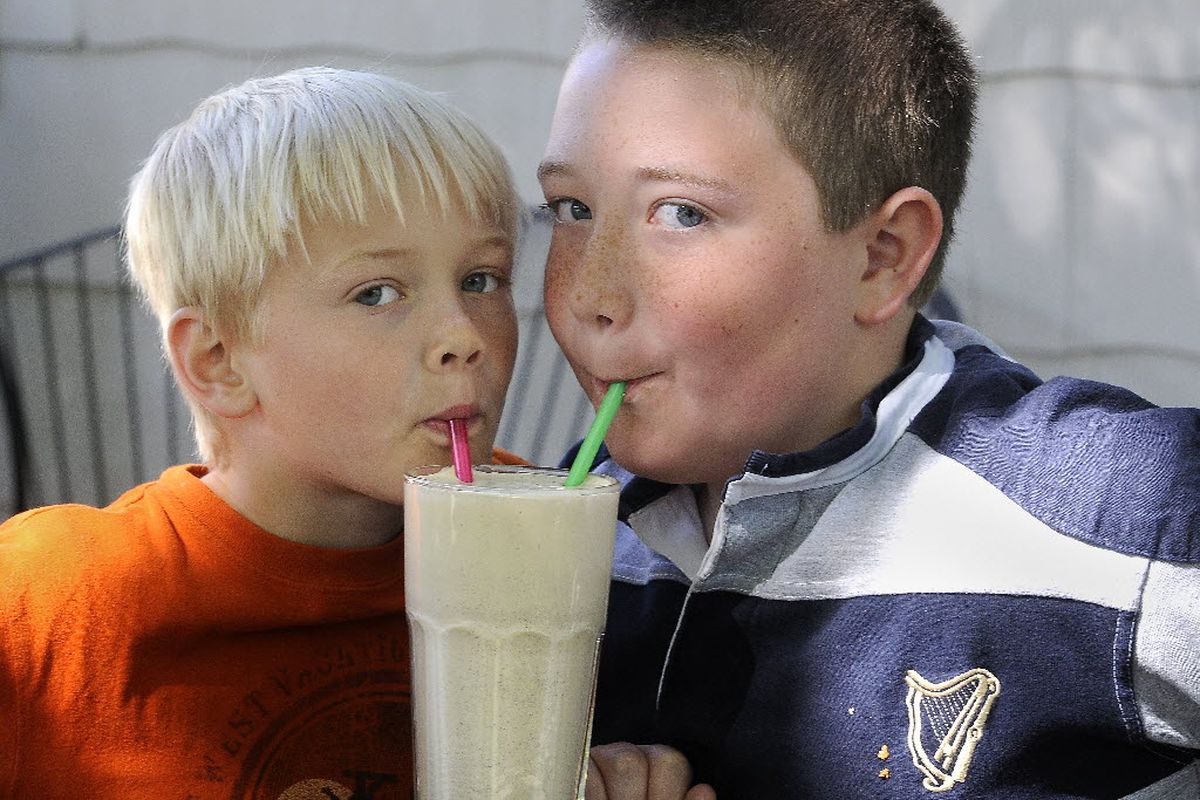From shakes to sodas, ice cream experts share success secrets

When it comes to ice cream, cones are king for most people.
Who doesn’t love licking a cold, sticky-sweet something on a hot summer day?
Unless, that is, you’d prefer to sip your creamy treat or smother a dish of the chilly stuff in toppings.
These are the salad days for milkshakes, ice cream sodas and ooey-gooey sundaes, so we got the scoop from a few pros on the best way to master these fountain classics at home.
Not surprisingly, there were strong sentiments about milkshake mixing methodologies.
Let’s start with the most unconventional. When Jason Williams, owner of Brain Freeze Creamery, makes shakes at home, he doesn’t use a blender, but stirs by hand.
“I think it’s because I’m kind of lazy and I don’t want to wash a blender,” he joked.
Seriously, though, he starts with a large, sturdy tumbler and adds a couple of scoops and then dribbles milk in while stirring: “Then, you can get it to the thickness you like.”
The Scoop’s Patrick Sullivan practices a variation of that minimalist approach, starting the mixing process at a very slow speed.
“If you start it too fast, it’s going to come flying out of the top of the container,” he said.
While doing the slow and steady blending is a constant, the flavors of those popular shakes are ever-changing.
“Customers can order any flavor of ice cream to be used in their shakes,” Sullivan said.
Yet another school of shake thought subscribes to the tenet that less is more.
Russ Salvadalena, the manager of the Washington State University Creamery in Pullman, said a special shake base that’s lower in fat makes for an extra-velvety drink.
“It’s half the butterfat, which helps the milk blend with the ice cream,” he said.
When using full-fat regular hard ice cream, it can be a challenge to get the proper emulsion.
“It’s almost like mixing salad dressing, where the solids and liquids can separate,” Salvadalena said. “Some commercial ice creams have stabilizers added to help prevent the formation of ice crystals. Those are more difficult to blend.”
Ideally, when shaking it at home, a from-scratch ice cream would be the best choice, an ice cream that contained pasteurized eggs, said Salvadalena, “because eggs are great emulsifiers.”
At Ferdinand’s, the creamery’s ice cream shop established in 1948, the neutral shake base is the foundation to which syrups and flavorings are added. When mixing shakes at home, fresh summer fruit is also a great option.
For a classic cooler that’s not quite as rich as a shake, let’s turn the clock back to the heyday of the old-fashioned soda fountain at the neighborhood pharmacy. Those spots, which have nearly disappeared from the culinary landscape, were community gathering places specializing in concoctions such as banana splits and ice cream sodas.
There’s still such a sweet spot in Davenport, Wash., where the man behind the counter is still called a soda jerk and they continue the sweet tradition of serving a sidecar on the rim of each ice cream soda.
“You can’t find ice cream sodas anymore,” said Tom Paul, the owner of Lincoln County Pharmacy, home of Paul’s Old-Fashioned Soda Fountain, which opened in 1992.
To make an ice cream soda, Paul starts with a shake base and adds flavor.
“Strawberry and chocolate are by far the most popular flavors,” he said.
To the flavored base, he suggests adding a small scoop of ice cream, followed by soda water.
“The taps on soda fountains can be set at different positions to create different levels of carbonation,” Paul said. “That’s where the term soda jerk came from.”
Once the flavored ice cream is mixed with the soda, a scoop of ice cream is balanced on the lip of the glass.
“That’s a sidecar,” Paul explained, adding that a well-made ice cream soda is a true work of art, especially for customers who remember drinking them when they were kids.
“Anyone 60 and over has experienced ice cream sodas and loves them,” he said.
Then there’s the ice cream soda’s sweet little sister, the float.
What’s the best way to make a float that doesn’t foam like a frosty volcano?
At Ferdinand’s, the staff stirs in a little soda pop into the ice cream base and slowly fills the glass. A scoop of ice cream is gently lowered into the drink as the cool crown, said Jenifer Pittman, a senior who works at the ice cream shop.
Sullivan, from The Scoop, said patience is the key to a fine float.
“It bubbles and foams. There’s not much you can do about it,” he said. “But it foams less if you add the soda very slowly.”
While root beer floats are the gold standard, the soda and ice cream combinations are limitless.
Dry Soda’s rhubarb flavor and strawberry ice cream float, anyone? A scoop of dulce de leche plopped into a cola sure sounds peachy keen.
For the quintessential over-the-top sundae-esque dish, the combo of ice creams and toppings has come a long way since the original banana split.
The classic banana split was served in a long dish, with three scoops of vanilla ice cream. One scoop was topped with chocolate syrup, the next with strawberry and the third scoop wore crushed pineapple. Whipped cream, nuts and cherries provided the finishing touches.
Now, anything goes.
“People get to choose the ice cream flavors for banana splits,” said Pitman.
The important thing to remember is not to go overboard on the syrup toppings, she added.
Finally, when making old-fashioned ice cream treats at home, don’t forget to stock up on a few essential accoutrements: straws for sipping shakes, long-handled teaspoons for fishing bites out of a float and a big stack of napkins to help keep the mess to a minimum.